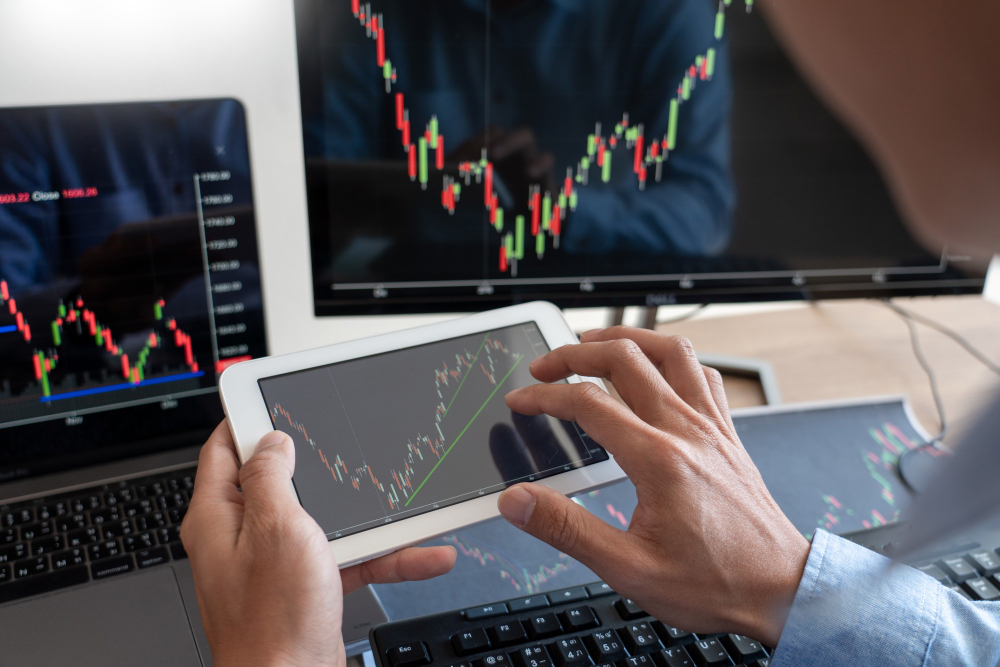The forex market is a marketplace where currencies are bought and sold. In fact, it is the largest financial market with more than $6 trillion passing through this market daily. For this very reason, most people find Forex extremely attractive. Forex trading also offers high returns and the ability to trade 24 hours five days a week. Still, doing well in this market requires knowledge of what is forex trading and even getting a good grasp of the advanced strategies.

Post Contents
Getting to Grips with Forex Trading Fundamentals
Essentially Forex trading involves swapping one currency for another. Currencies are always traded in pairs. For instance, in the EUR/USD pair, you would be buying Euros while simultaneously selling US dollars. The value of a currency pair reflects how much of the secondary currency is needed to buy one unit of the base currency. For example, if EUR/USD is at 1.10 then 1 Euro equals 1.10 US dollars. Traders typically execute trades through brokers who offer platforms for conducting transactions, analyzing market data, and utilizing trading tools.
Path to Mastery: How to Create a Trading Strategy
Proficiency in Forex trading requires more than realizing its basics. Some strategies behind solid trading are likely important for long-term success. A trading plan usually involves both technical and fundamental analysis for entering and exiting trades. Technical analysis is an art form of reading price charts and using indicators like moving averages, Fibonacci levels, and oscillators such as the Relative Strength Index (RSI) to predict the probable future move of prices. For traders, the behavior of price is better apprehended by comparison and analysis with historical data in an attempt to point out possible patterns that may indicate what the future might hold. Fundamental analysis monitors economic indicators, such as interest rates, employment data, or geopolitical events, to infer strength on the whole of the currency involved. A trader using fundamental analysis may carry out long-term trades based upon anticipated changes in a country’s economic outlook.
Risk Management and Emotional Discipline
While a proper trading plan is constructed, risk management should be at its prime all the time for capital safeguarding and finally sustaining long enough in trading. This implies the placement of stop-loss orders to limit likely losses and never risking a good percent of one’s trading capital on just one trade. And emotional discipline is the key. The Forex market is quite volatile and fears of greed might make one impulsive, which could prove costly. Successful traders are composed and objective; they adhere to their trading plans and make their decisions at the analysis rather than emotionally.
Leveraging Community and Network Insights
In the realm of Forex trading, the collective wisdom of a community can be invaluable, particularly for those transitioning from beginner to advanced levels. Engaging with trading forums, participating in webinars, and joining local or online trading groups can provide insights that go beyond standard educational materials. These communities often share real-time trading experiences, strategies, and advice that can be crucial for understanding market dynamics and potential pitfalls. Furthermore, building a network of seasoned traders allows for mentorship opportunities and the exchange of tactical approaches that are not readily available through traditional learning channels. By leveraging these collective insights, traders can gain a more nuanced understanding of market trends and enhance their decision-making skills.
Conclusion
Trading in the foreign exchange market presents profit potential. It also comes with substantial risks. To excel as a trader it is essential to grasp the fundamentals, become proficient in concepts, develop a solid trading plan, and prioritize prudent risk management.